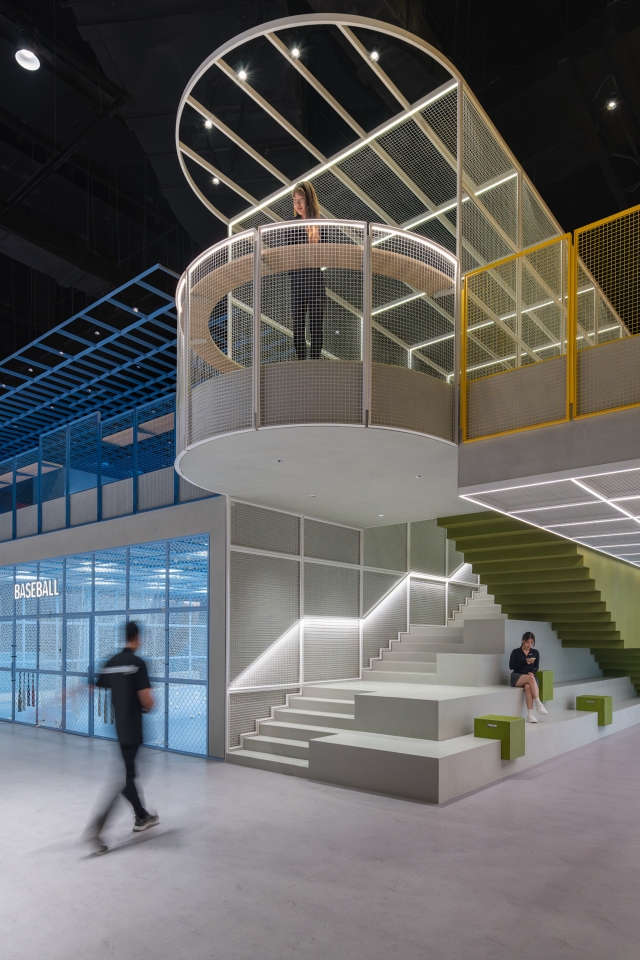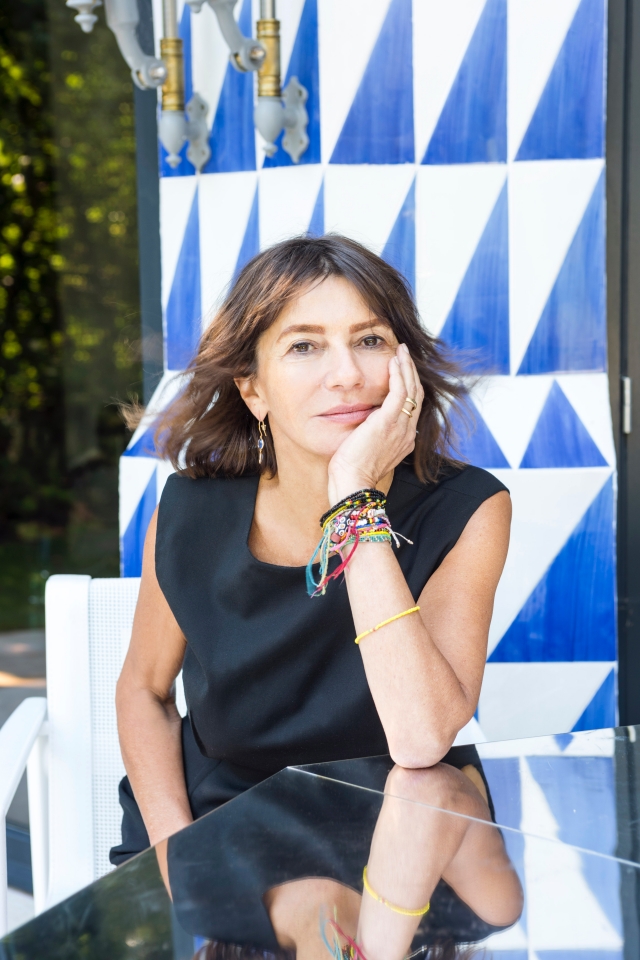When tourism is robust, it means plentiful opportunities for travellers to learn from different countries and cultures, the chance to learn and grow, see and hear. It’s also an important source of economic growth. This applies even in the most traditional border areas - when there’s an increase in the number of tourists, this leads to richer and more diverse business possibilities. Dajin Village, located in the Jinshan District, Shanghai is the best example. This is a typical waterside village in the south of the Yangtze River, where for generations, local villagers have lived near water and made a living by fishing and farming. With the construction of the nearby Huakai Haishang Ecological Garden, the local life has also gradually changed.
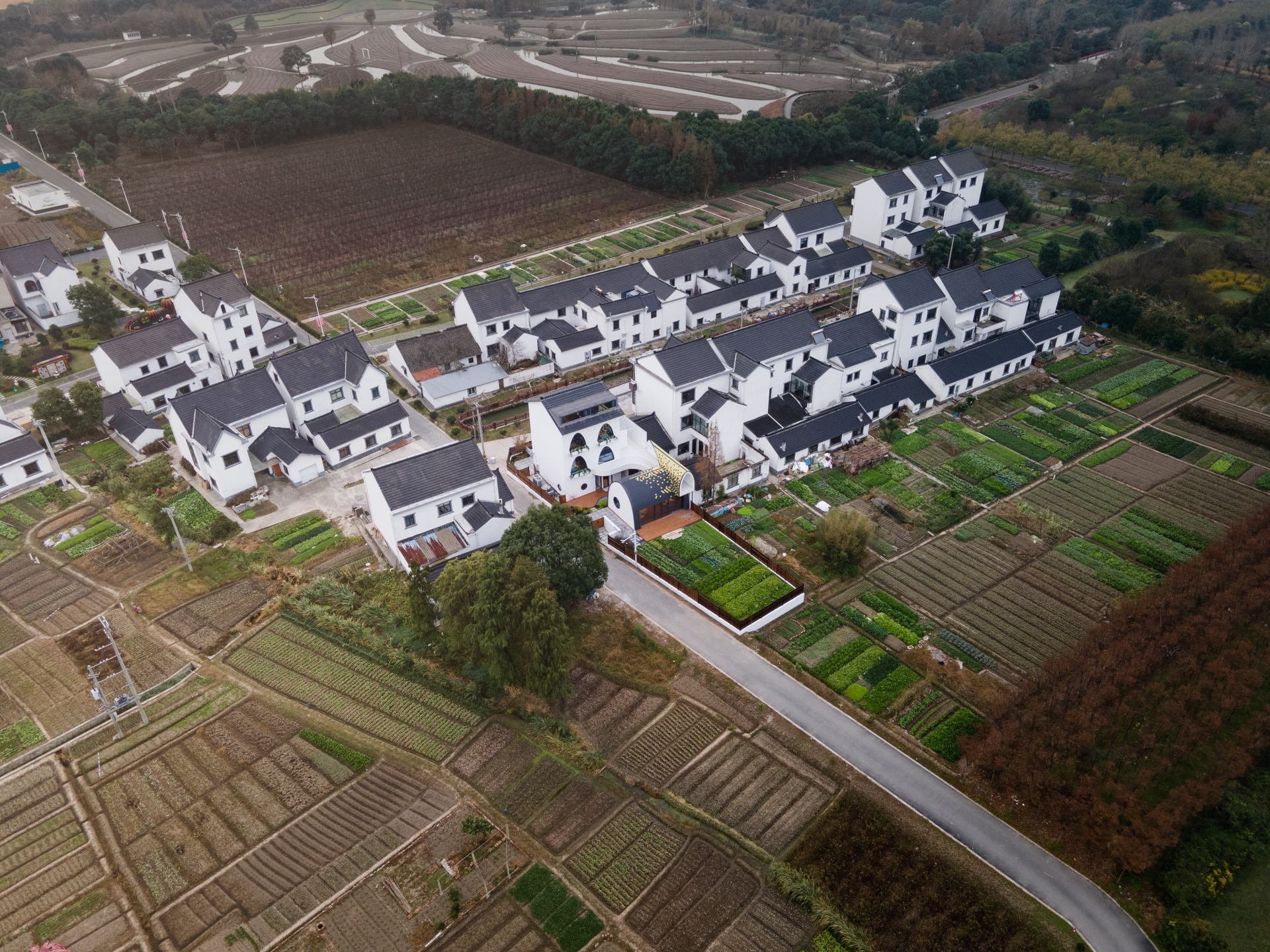
The increasing number of tourists called for new types of tourism. It was difficult for traditional forms of agritainment to meet the demands of tourists from cities. For this reason, creating an example and template of new forms of homestay to promote the industrial upgrading for surrounding peasants became the reason for Huahai Homestay. DUS Studio was commissioned to take on this project, and the first major question they wanted to tackle was, “How does one fit the thousand-mu sea of flowers into the waterside village in the south of the Yangtze River?” The design team explains that as a whole, they retained the one storey in the northern side and three storeys in the southern side of original dwellings, as well as the structure of yards in the north and halls in the south. Also, according to the local policies, they redesigned the planar functions without deforming the original outlines of building roofs.
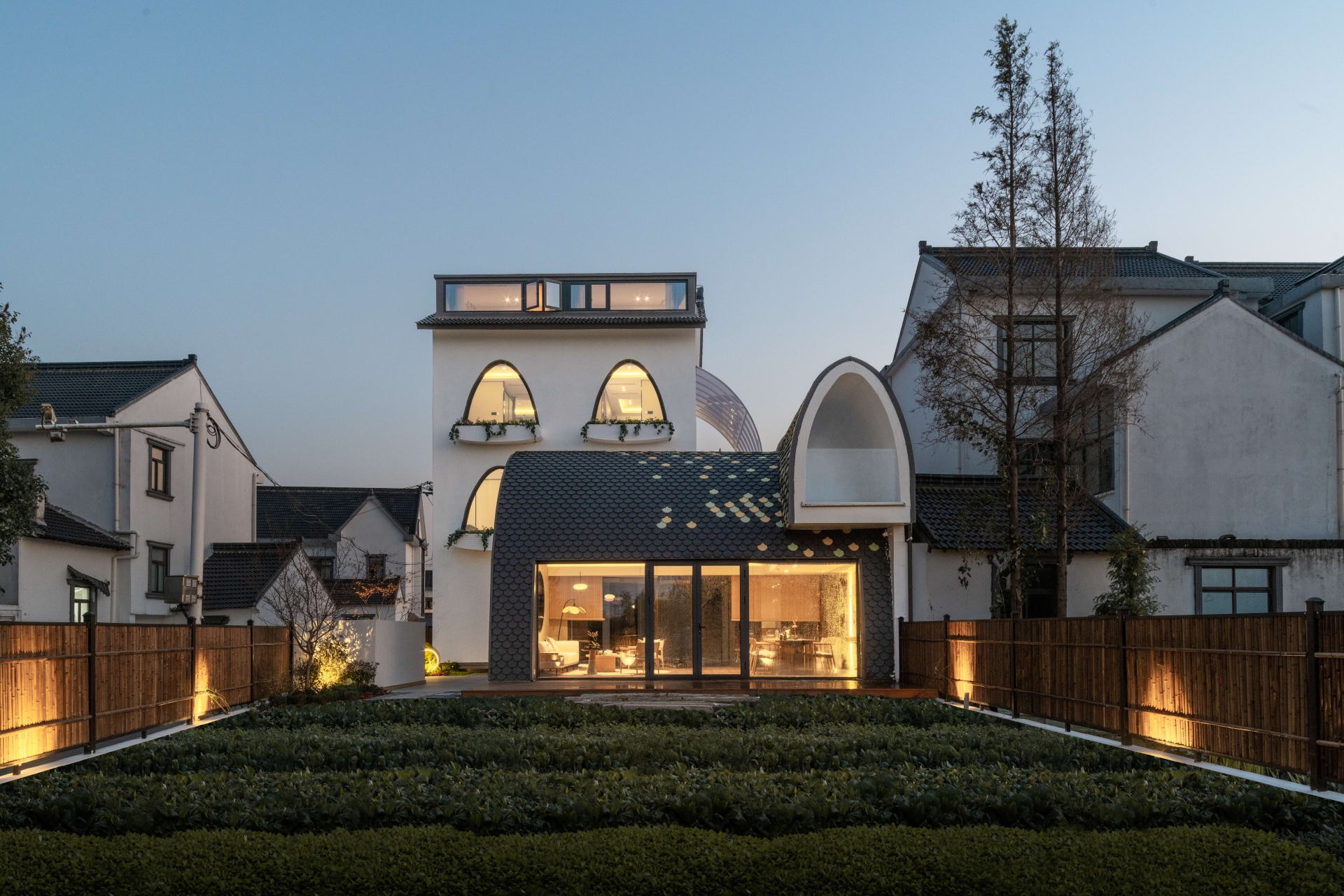
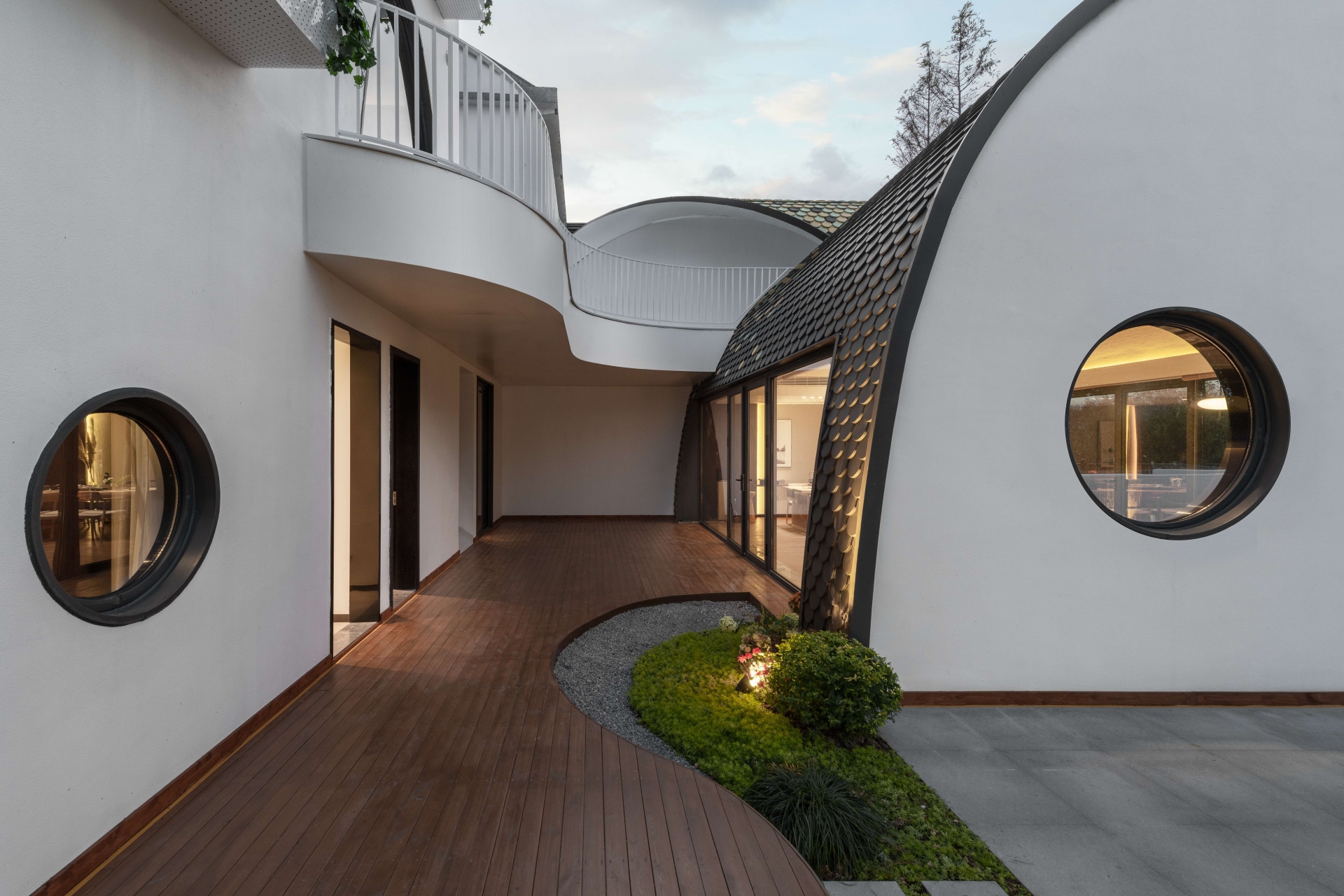
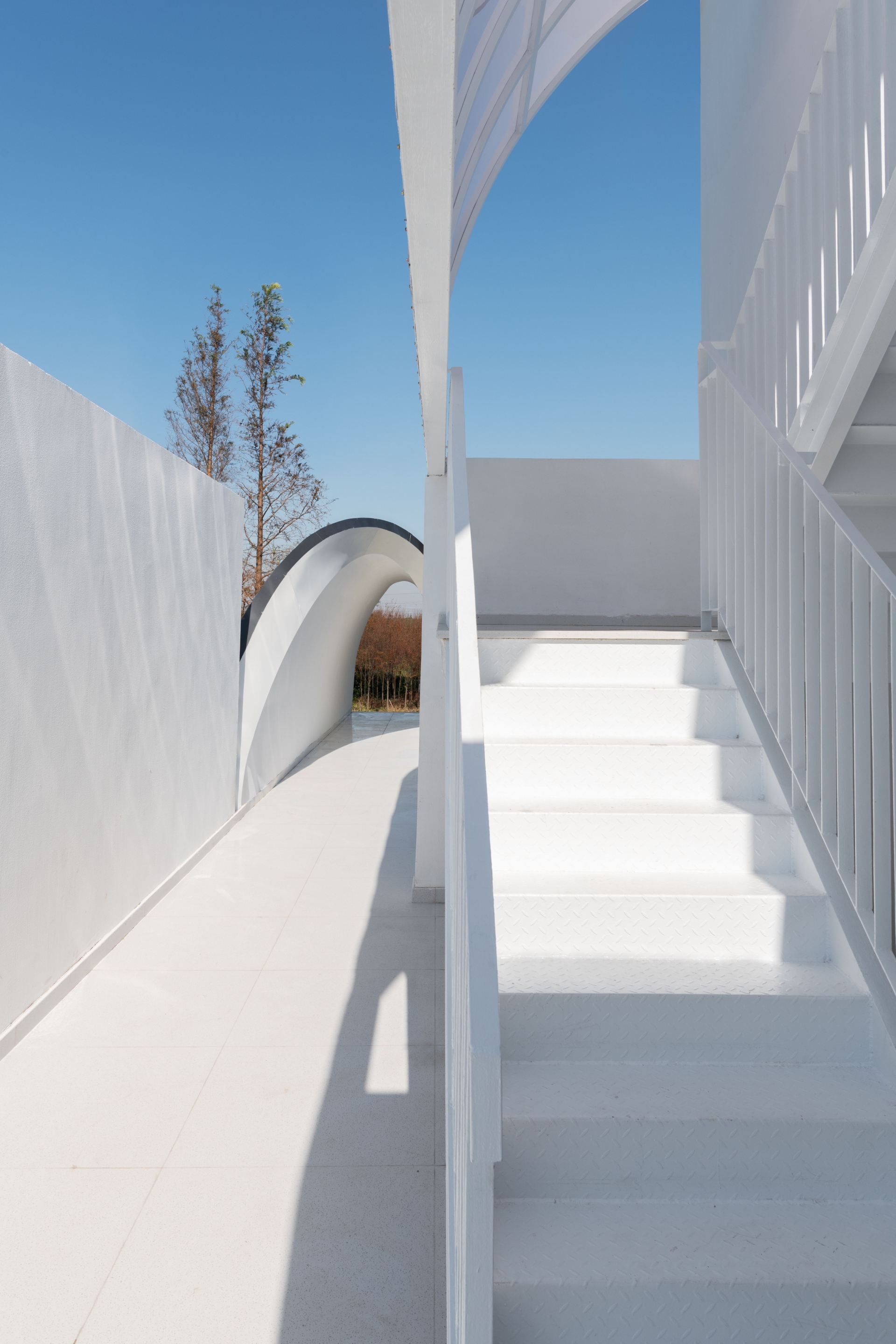
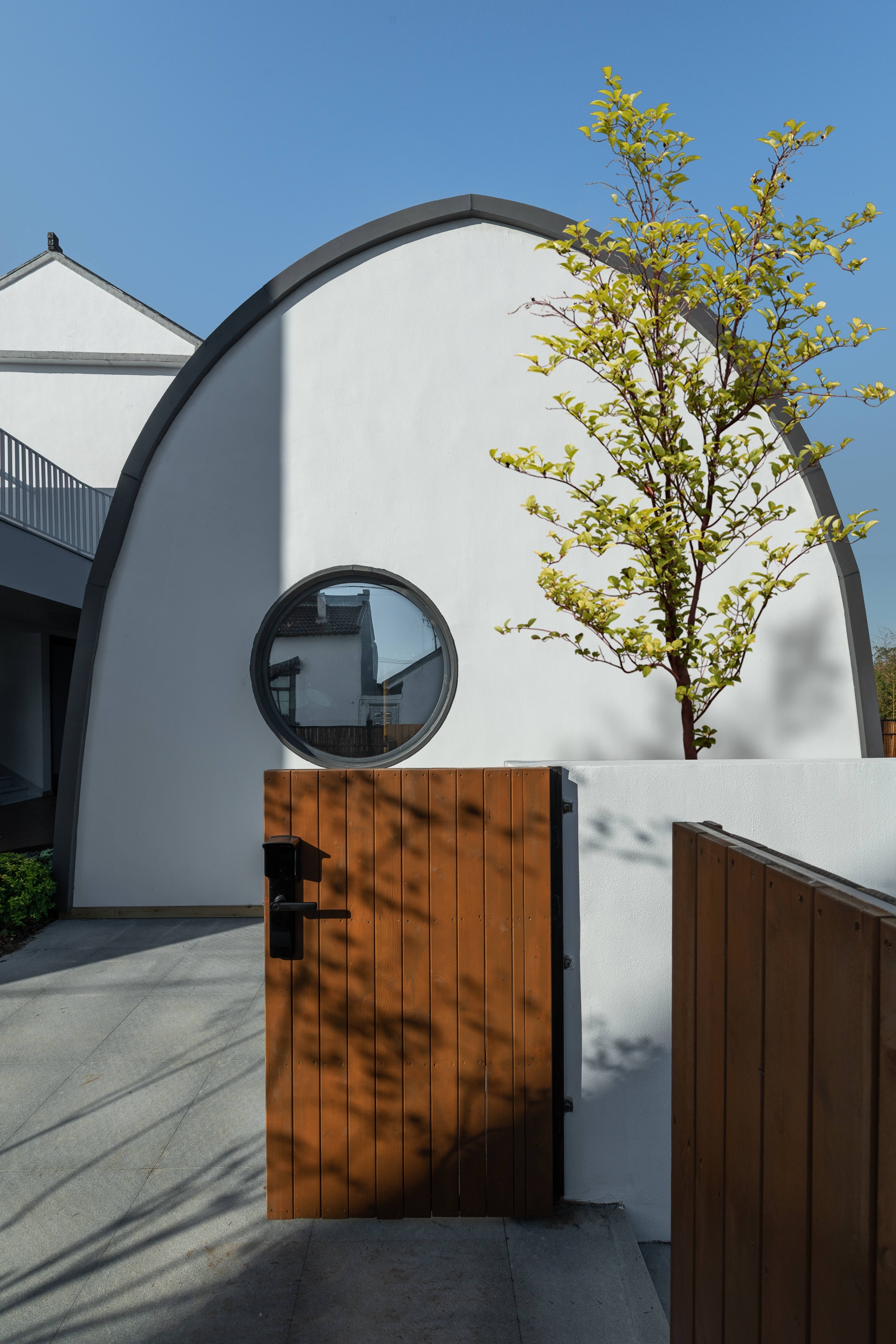
Huahai in the northern part is the primary aspect of the landscape, where its main purpose is to serve as the transition to the guest rooms on the second and third floors. Large French-style windows were then installed to let the view of the sea of flowers into the rooms. As the most lively visual elements of homestay buildings, the exterior staircases connect different types of landscape space. When walking on the staircase to the third floor, one can get a sight of the sea of flowers and waterside views.
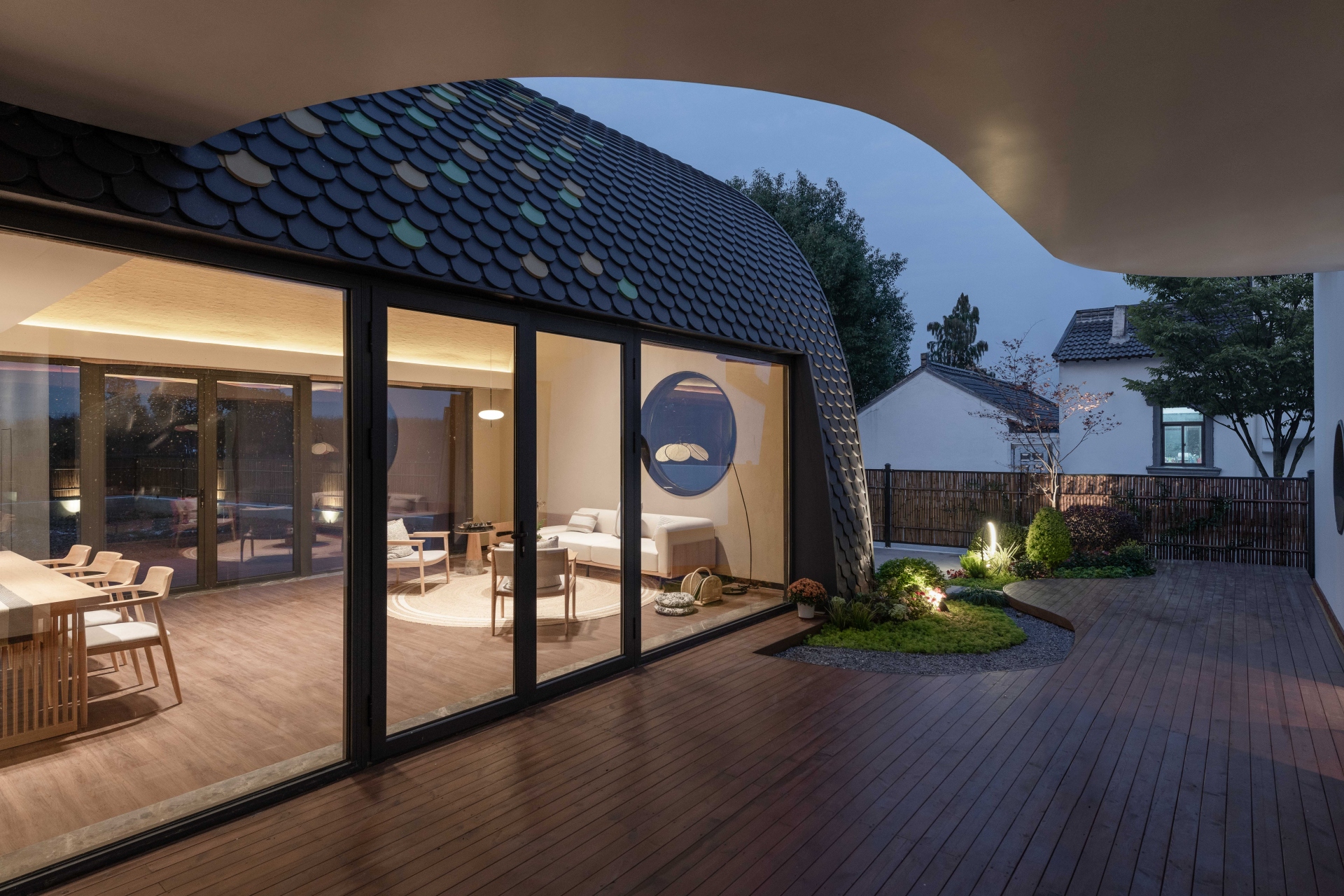
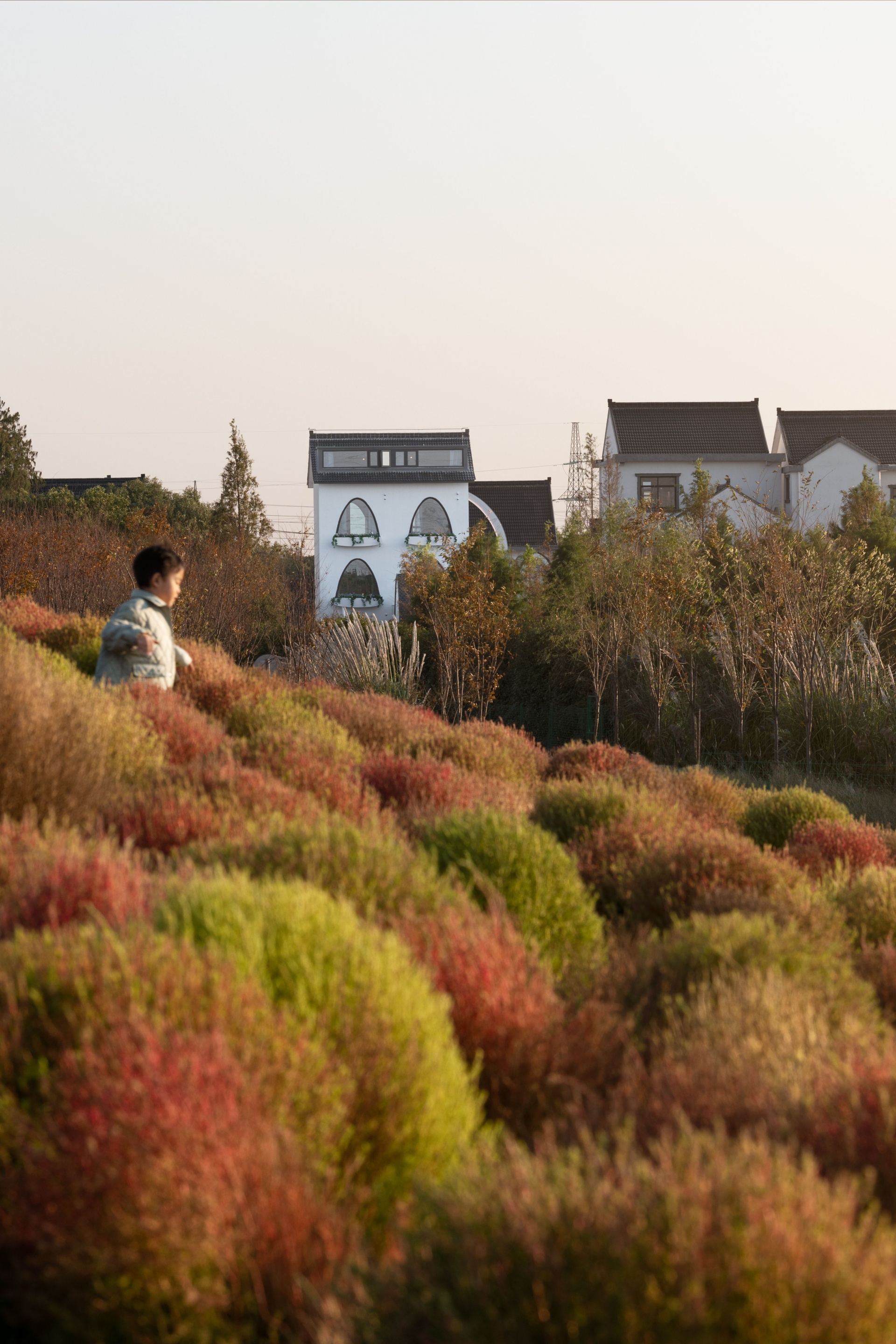
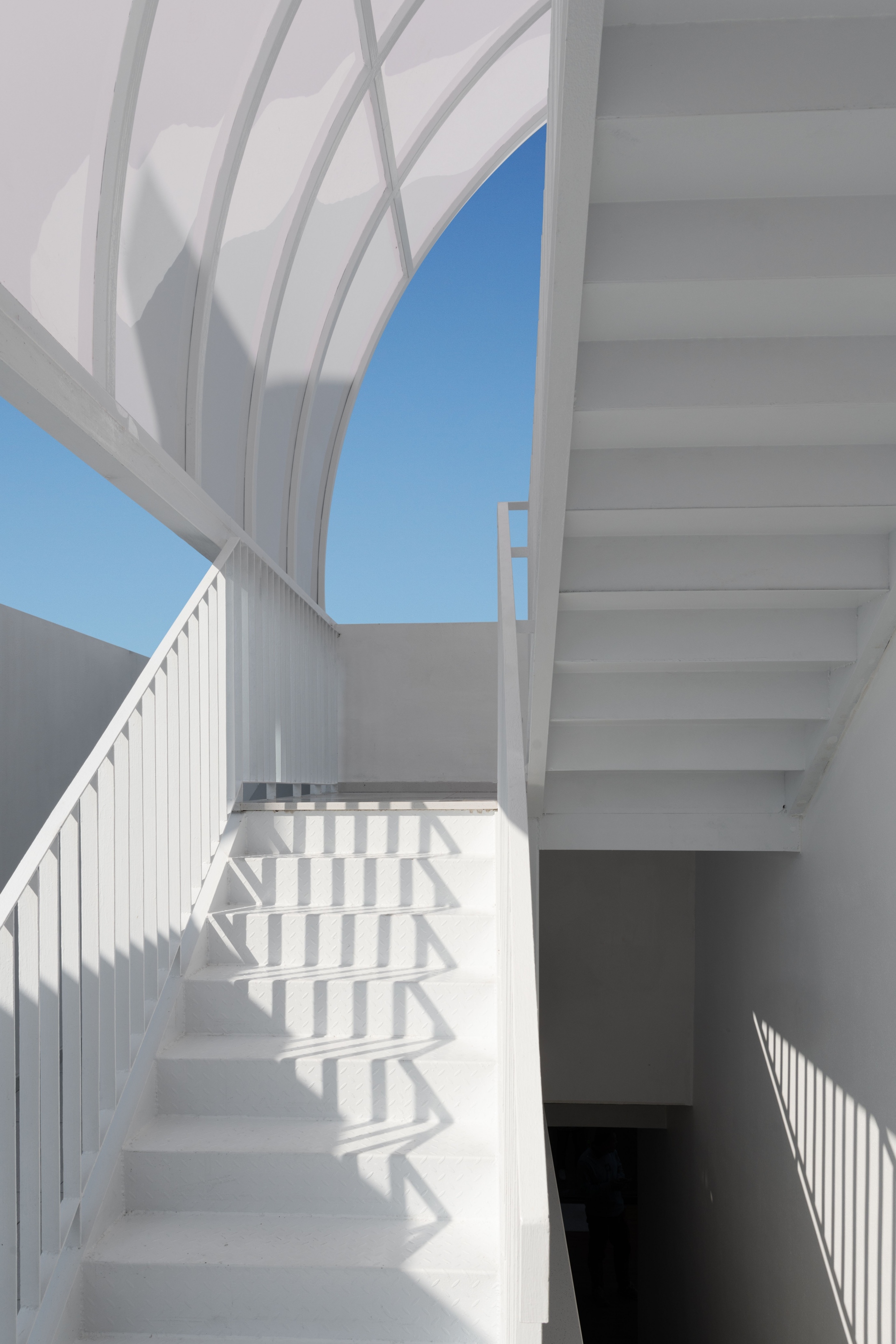
So how does this homestay demonstrate its own styles and features through its design? Opine the design team, “Architecture should be deemed as an independent existence in the whole environment. It should be set off by the surrounding environment from a distance. This is our original intention of design.” Also, because this homestay building plays a leading part in the transformation of homestay in Daijin Village, they didn’t want to cause any severe impact on the basic styles and features of waterside views in the south of the Yangtze River.
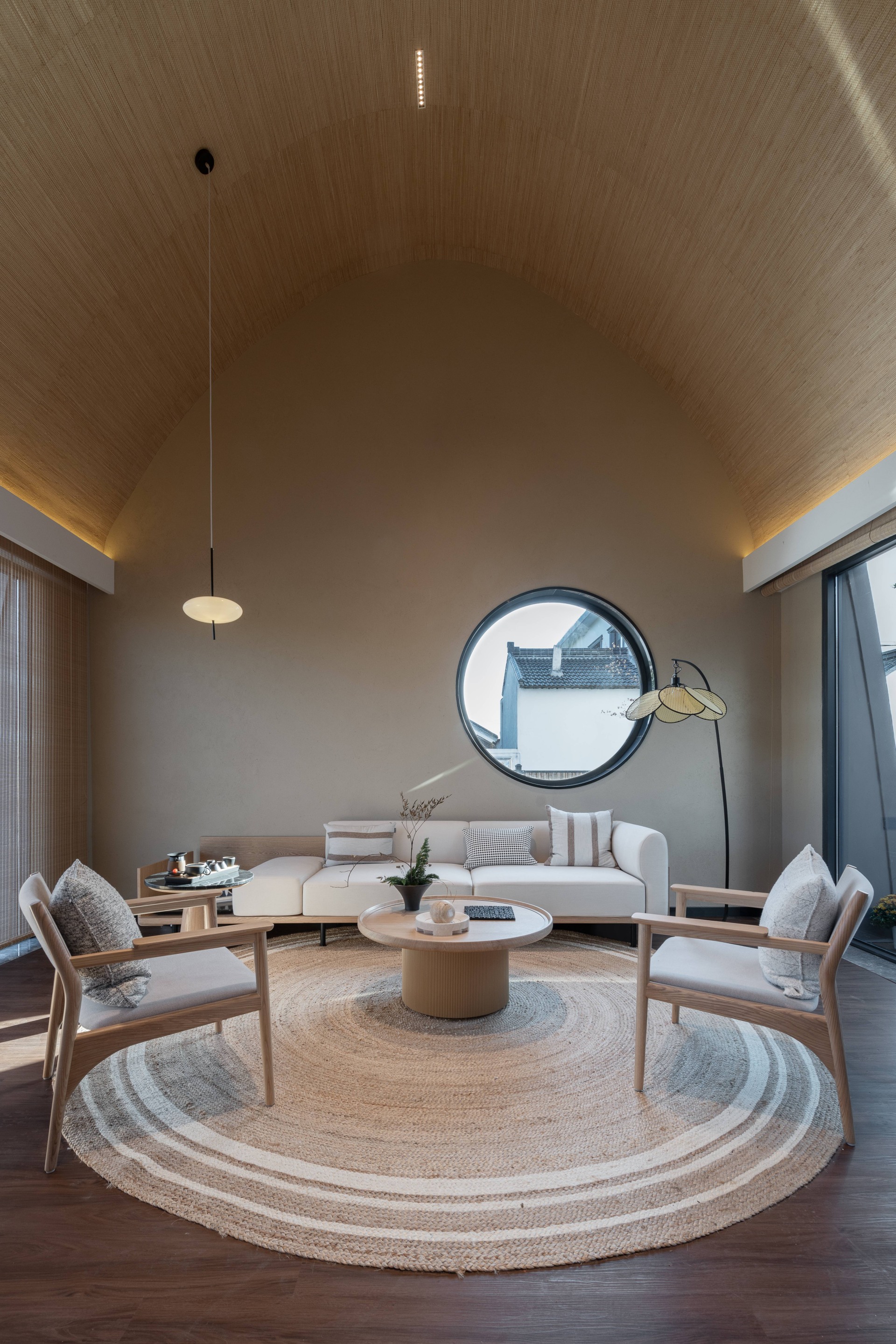
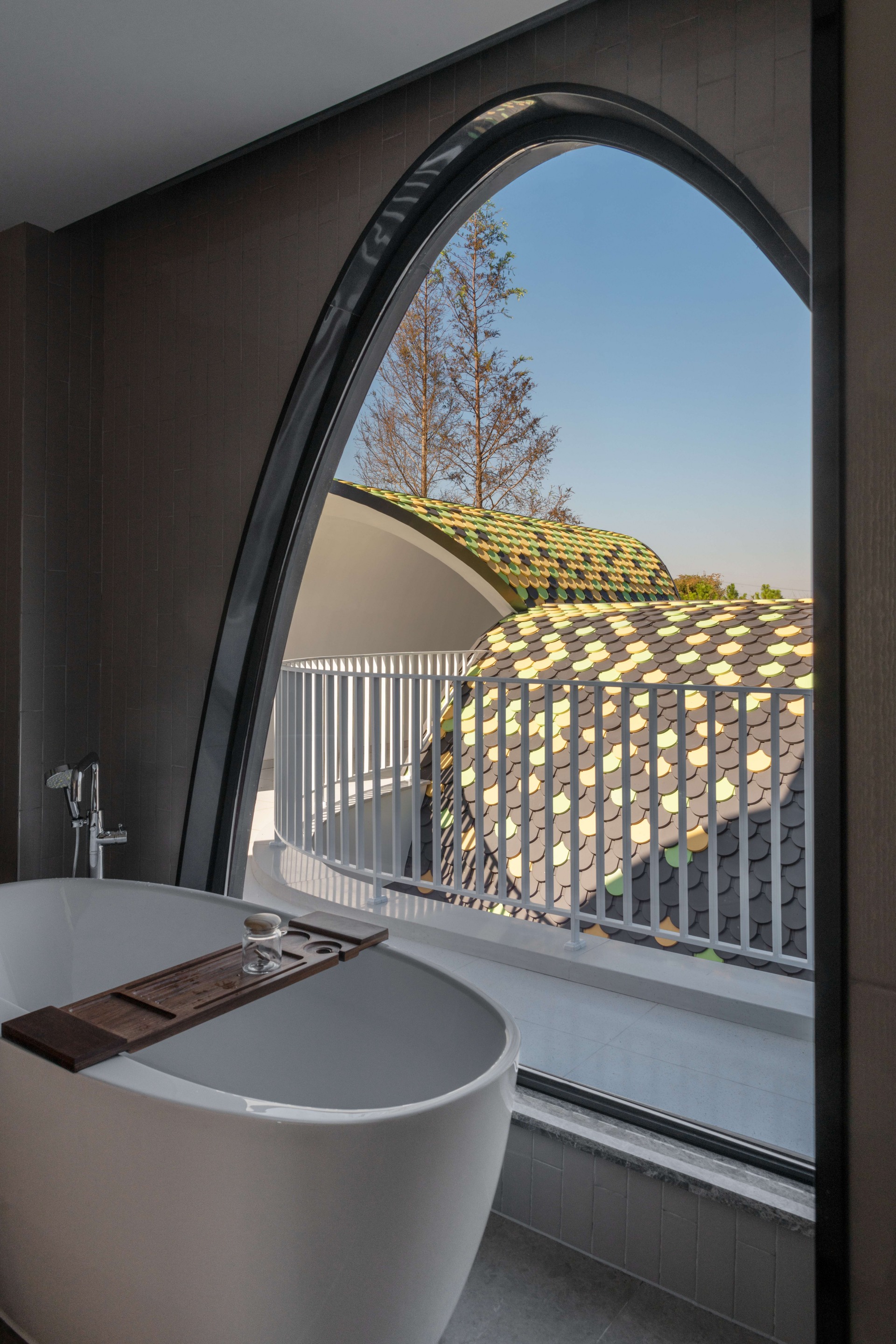
Therefore, the primary principle was to continue the keynote of white walls and black tiles in the waterside residential dwellings. On this basis, they extracted the curved line of petals to make breakthroughs in canopies between staircases, rest space and architectural windows. In this way, heterogeneous forms have been embedded in the overall scene to induce visual impact and memory points.
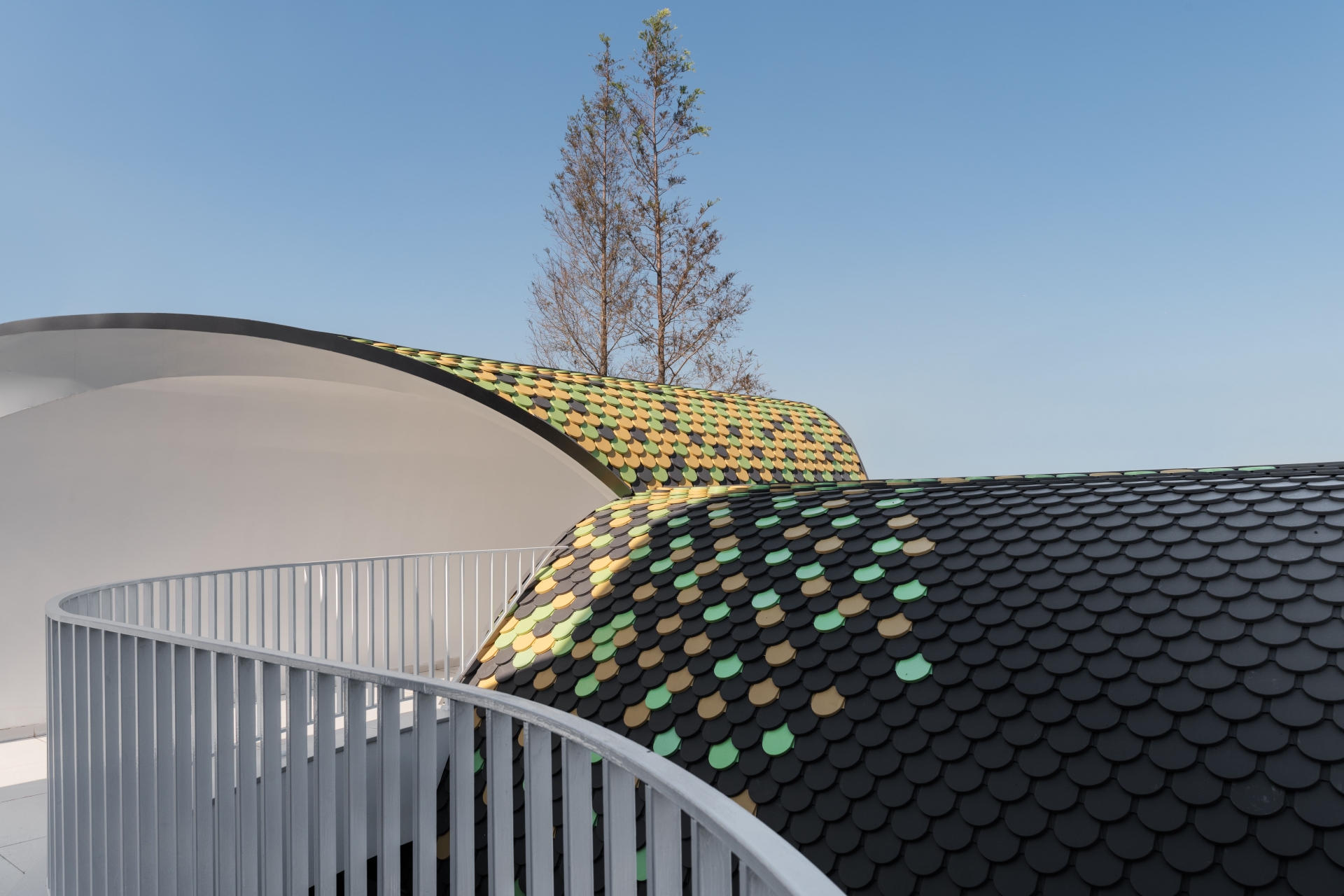

On the roof facing the sea of flowers, colourful metal tiles have also been embellished. In this way, it seems as if petals were on the roof, so the colours inside the courtyards have been enriched. The clever combination of the characteristic waterside town with the sea of flowers imminent from all seasons are the strongest traits of this homestay, attracting visitors like moths to a flame all year round to appreciate the beauty of Dajin Village.





